
Beat Back Beetles! How to Get Beetles off Your Plants
By Kaw Valley Greenhouses, Inc.
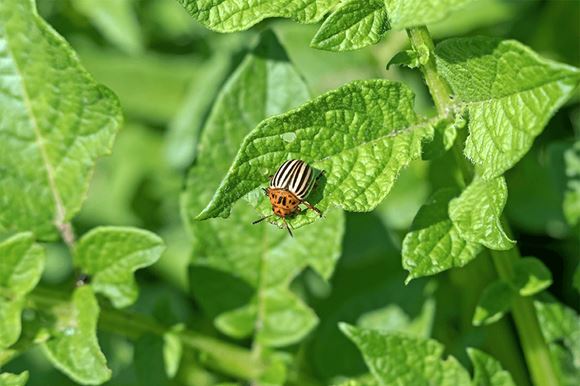
While not all bugs are bad, those big bad beetles can ruin our favorite plants and chomp away at our crops. Knowing how to identify, prevent, and get rid of beetles is key to protecting your garden. Read on for tips on how to keep these beetles off of your plants!
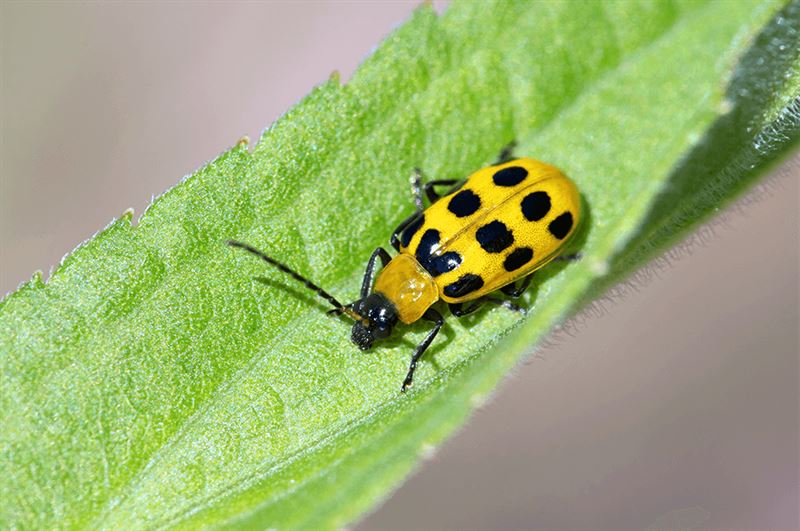 Cucumber Beetles
Cucumber Beetles
Cucumber beetles are hungry little rascals with a taste for cucumbers, corn, squash, potatoes, and legumes. If you're trying to spot them, look for striped, spotted, shiny beetles which are mostly yellow and black. While they aren't equally destructive every year, it's good to try to get rid of these beetles as soon as you see them on your plants. The larvae are the most destructive, as they are laid in the soil and then feast on the roots of your plants.
Insecticides probably won't help you here, so get creative with how you deal with cucumber beetles! You can plant yellow and orange zinnias to create a "trap crop" for the beetles to be attracted to. You can pick off the bugs with your hands, spray them off, or vacuum them up.
Seedlings are the most susceptible to damage from cucumber beetles and their larvae. You can easily prevent them by covering your seedlings and rows with a lightweight frost cloth until the plants begin to flower. While occasionally a big problem, as they can transfer plant viruses, cucumber beetles are usually pretty manageable, and most plants will be salvageable after some damage.
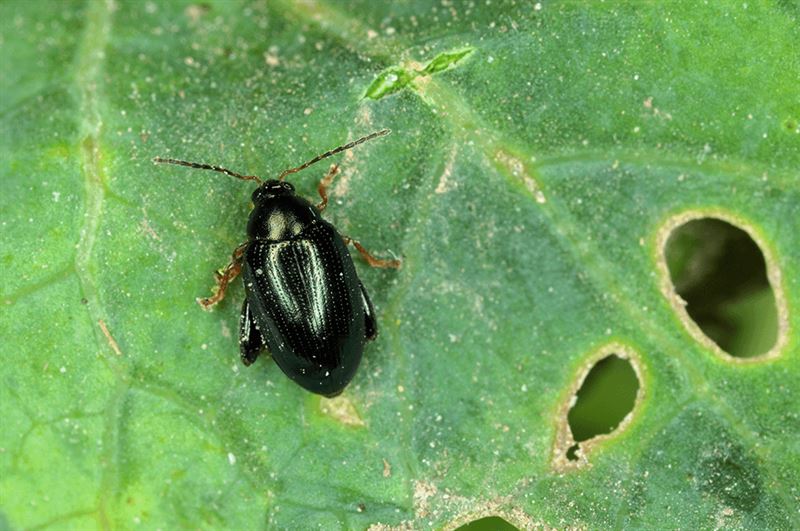 Flea Beetles
Flea Beetles
Flea beetles have an extra sprinkling of dreadfulness to them because they are such adept jumpers, just like fleas! They are tiny, black or tan, and shiny, with large back legs that allow them to hop along great distances in comparison to their size. There are actually many species of flea beetles, and each has a preference for different plants. Keep an eye on plants like eggplant (I always notice them here first), beans, broccoli, cauliflower, kale, and tomatoes.
You're more likely to spot the damage these beetles do to your plants than the beetles themselves. Look for "shot holes," which are tiny holes, usually no bigger than a millimeter or two, on the leaves of your plant.
The physical damage they do by eating isn't as threatening as the bacterial disease, like blight, that they spread between plants.
Treat flea beetles with insecticide early in the season. Alternatively, you can dust your plants with diatomaceous earth or use sticky traps to grab flea beetles as they hop through the air.
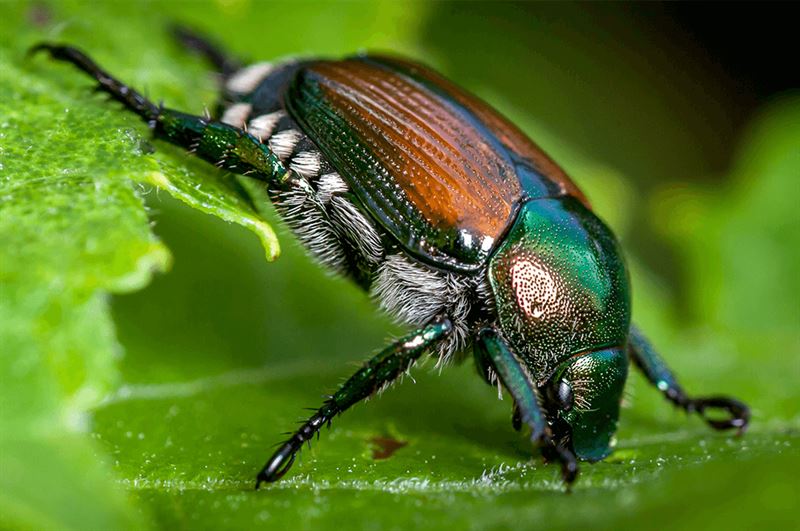 Japanese Beetles
Japanese Beetles
If you see a glittering metallic green beetle with coppery wings, you should take action to get them off of your plants! While they only live 30-40 days, they can be highly destructive during their lives. Japanese beetles love eating beautiful ornamental plants and turfgrass. They have an appetite for over 300 different varieties of ornamental plants. When they find good grub, they release pheromones that attract even more beetles to come and feed.
If you suspect a Japanese beetle attack, you can spray your plant with neem oil or other insecticides. You can also pick them off and drown them in soapy water. To prevent larvae or grubs from growing into adult beetles, you can also introduce beneficial nematodes. These are tiny worms that will kill the predatory insects that consume them.
You can introduce beneficial nematodes, which are tiny worms that will kill the predatory insects that consume them.
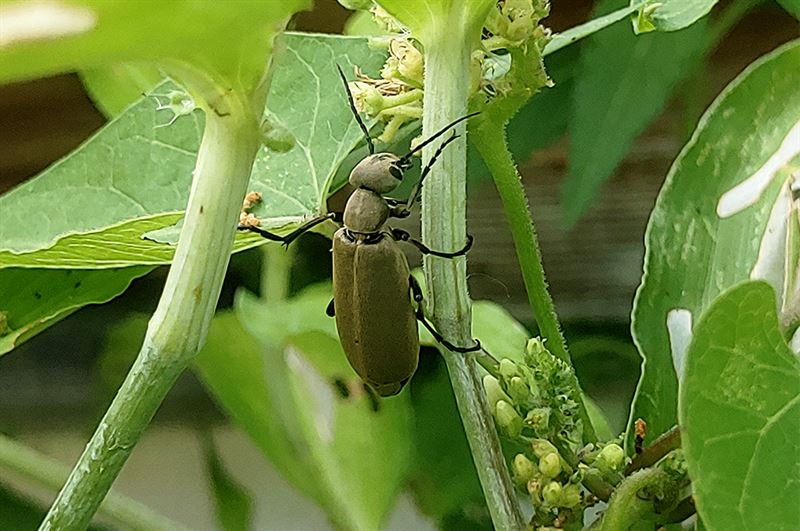 Blister Beetles
Blister Beetles
There are a few species of blister beetles in our area that can wreak havoc when they feed in groups. Commonly seen are grey, black, and striped blister beetles. They do enjoy feeding on a variety of plants and can be found on many common weeds including amaranth but are known to make their way into landscapes and vegetable gardens where they feast quickly on beans, tomatoes, chard, and peppers, to name a few.
Watch for a lacy appearance on your leaves, and pay attention to new greenery, as it is most likely to be consumed first. They may also be seen munching on tomatoes or other fruits. Wear gloves when handling blister beetles. You won’t want to grab these guys with a bare hand! As their name suggests, blister beetles secrete a chemical that irritates the skin. Fortunately, they tend to drop to the ground when startled so the soapy water method can still be effective by jostling the plant. However, if there are several beetles around it would be more effective to use an organic insecticide like Spinosad.
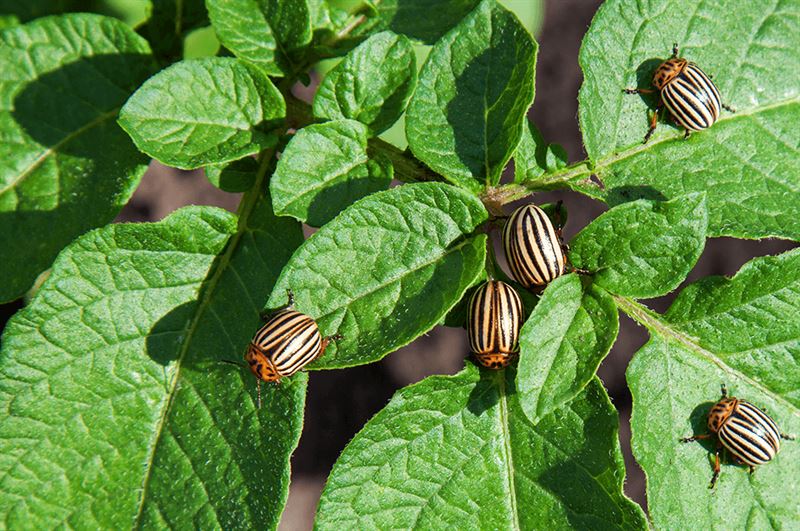 Colorado Potato Beetle
Colorado Potato Beetle
Usually known simply as "potato bugs," these common beetles are a nuisance for almost anyone trying to grow a thriving vegetable garden. They can kill entire plants or severely reduce a plant's ability to yield a good harvest. While they obviously love potatoes, they may also consume tomatoes, eggplants, and peppers.
These beetles are round, yellow-orange in color, and have black stripes and spots. They hide in the soil over the winter and emerge in spring to lay eggs on the underside of plant leaves.
Get these beetles off by regularly shaking your plants (gently) over a bucket of soapy or oily water to drown the beetles that fall off. You can also use neem oil or diatomaceous earth. You can prevent potato bug destruction by covering seedlings or introducing beneficial insects that will eat them, like ladybugs, lacewings, and spined soldier bugs.

Need some advice on how to start a beautiful garden? Sign up for our email newsletter, and receive free gardening articles, resources, and container designs to your inbox.
